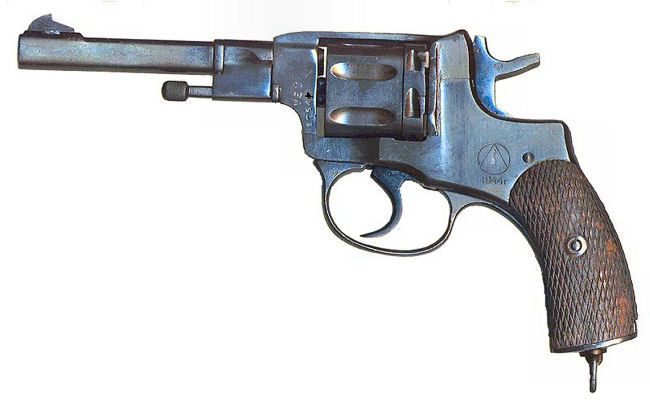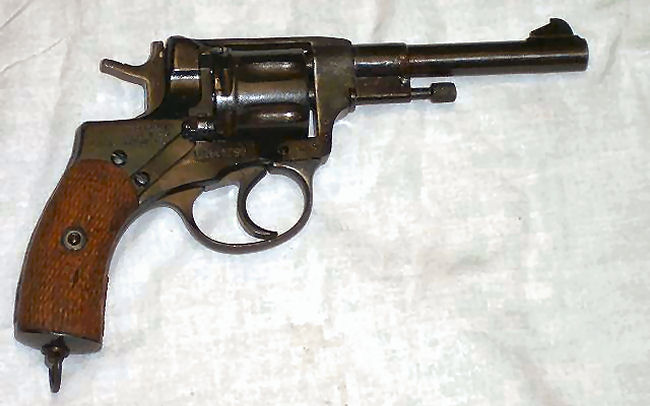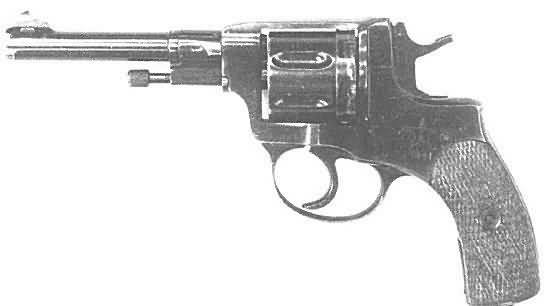The Nagant revolver was produced in both single-action and double-action versions. One characteristic of this revolver is that the cylinder moves forward before the hammer falls and the forward end of the chamber alined for fire telescopes the barrel. The cartridge outwardly resembles a blank cartridge, and has its bullet seated below the cartridge case mouth. The purpose of these design features is to prevent gas leakage at the joint between the cylinder and barrel.
It was highly doubtful that the complicated firing mechanism of the revolver was worth the effort and, in 1930, it was replaced by the Tokarev Tula 33 7.62 Soviet Automatic, however it continued to be made in WWII, reportedly upwards of 3 million altogether.
Heavy, but well balanced and highly accurate, numbers of the revolvers were used effectively by both the North Koreans and CCF in Korea.




